Spending time in a survival situation means that you also have to be prepared for cooking food and setting up meals. An emergency usually calls for quick decisions and it will usually leave you with fewer choices. You have to figure out how to prepare your meal, how to find what to eat, or how to make it at least a bit more appealing than it would be, just to feed you and keep the hunger at bay for a while. As long as you have some simple pots and even a homemade stove, you could manage to cook a survival meal for you and your family.
[the_ad_placement id=”in-text-1-type-r”]If you find yourself in a critical survival situation, either in the wilderness or in civilization (after a hurricane, tornado, etc), your main priority will have to be hunting. Depending on the area where you live, you will have to probably get used to fishing in rivers and lakes, or hunt some forest animals like squirrels, and so on. If you’re not familiar with the process of hunting and fishing you can learn more from our articles on squirrel hunting tips and how to fish.
Meanwhile, you may have some few other fresh items in your backpack or emergency kit, so you can use those to liven up your meal. In this article we will share some good recipes on survival cooking and how to make it good.
Trout in foil
As you can guess, this recipe’s main food is trout. If you are living or hiking in an area with ponds and lakes, where you know you can find trout, by all means, go for it. You need to catch the fish first of course. You can use some simple methods for that – use a simple fishing rod, mono-filament line and (if you can obtain one in a survival situation) a PowerBait to attract the fish. If you can’t obtain it, use some bugs or insects to be attached as bait. You have to be patient with that setting as catching fish can take quite some time.
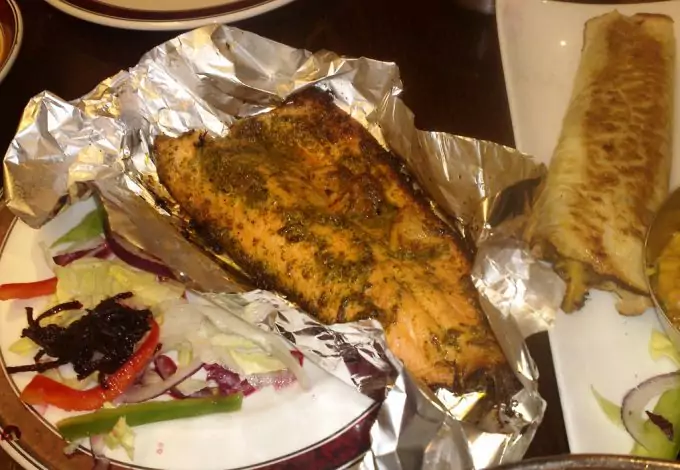
When you have your fish caught, you have to clean it. Chop off the fish’s head and then clean the guts and intestines. After that, wash the inside well with water and wipe it then with soft paper towel or tissue.
Here are a few tips on how to make sure your fish will taste as good as possible:
- Keep the fish alive. This will keep its flesh still tender and good, otherwise it is perishable within very short times. Also, keep the fish away from direct sunlight. Some experienced fishers also advise that the fish be kept in colder conditions. For example, you can use a cooler, or keep the fish in a shadowy area.
- As soon as you catch the fish and it is dead, clean it! If you’re in a hot area or in during the summer, the warm climate will remove the freshness and tenderness of the fish. As you clean it, you need to remove all the insides and wash it well. This removes bacteria and impurities.
- Cook the fish using methods like boiling, frying and baking. These make sure to preserve much of the natural taste. Also, overcooking dulls the taste and makes the flesh tougher to bite.
Now to the recipe! Wrap each fish you caught in aluminum foil. Salt and pepper can be added too (if you have them). Also, if you have lemon or lime, pour some of the juice over the fish. You could also just cut slices of the lemon and place them on top of the fish. Finally, put some cuts from a butter bar, or sprinkle with oil if you have one. Wrap the fish in the foil, so nothing can spill and place in the hot coals of the fire. It should take no more than 10 minutes to have it ready to eat. As you remove it from the fire, be careful how you handle that, as it will be very hot at first.
Here are a few tips and tricks on how to fish for trout that may come in handy for this recipe.
Meat/chicken with ramen noodles
This is a recipe which requires ingredients, which hopefully you have either in canned form or as freeze-dried food (all of them should be prepared in an emergency kit or when hiking in the back country.
You will need the following:
- Ramen soup mix (1 package/3 ounces)
- Chopped or dried onions
- Oil for cooking
- Chicken meat (dried or canned)
- Canned peas or any vegetable (can also be substituted by powdered vegetables)
- Dried/powdered cheese
- Spices
Begin by cooking the ramen noodles by following the directions on the package. In case you have frozen peas/vegetables, cook them with the noodles.
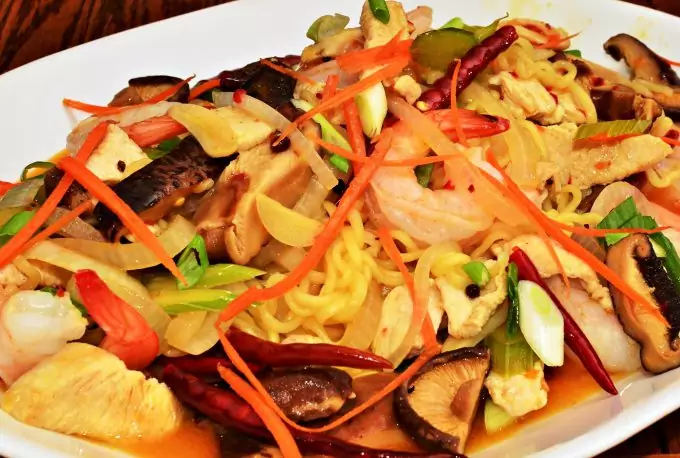
Then take a skillet and sauté the onion for a minute. If you have freeze-dried powdered onions, you don’t have to do this step. Otherwise, proceed to the chicken and heat it in warm or boiling water. Add the powdered onion to it. If you have fresh onions, you sauté them along with the chicken.
As the ramen noodles come with a flavoring packet, you can add that now to the ramen and peas/vegetables. Stir everything (chicken with sauce and onions) until it is nicely mixed. As you’re ready to serve the meal, add in plates and sprinkle with the cheese powder and spices.
If you’re in the wilderness or in much harsher conditions you may have to hunt rabbits or other forest/wild animals to substitute the chicken bit. Fish will also do the trick and will make a nice meal.
Preparation time is 10 minutes. Cooking time is 15 minutes.
Peanut butter energy bars
This recipe requires that you prepare it at home before you go camping/hiking or if you want to have some homemade food in your emergency survival kit.
You need three simple ingredients:
- Peanut butter, 1 cup
- Honey, ¾ cup
- Instant oatmeal, 3 cups
Take the peanut butter and honey and mix them in a saucepan. You need to heat it a bit on low heat, just to make them slightly more liquid and easy to manage. Stir them until you have a homogeneous mixture. Pour the oatmeal contents in a pan and add the mixture you just made. Mix them together and then start pressing the whole thing so it’s nicely flat and even on all sides. You don’t have to refrigerate, so simply cut with a sharp knife into separate bars.
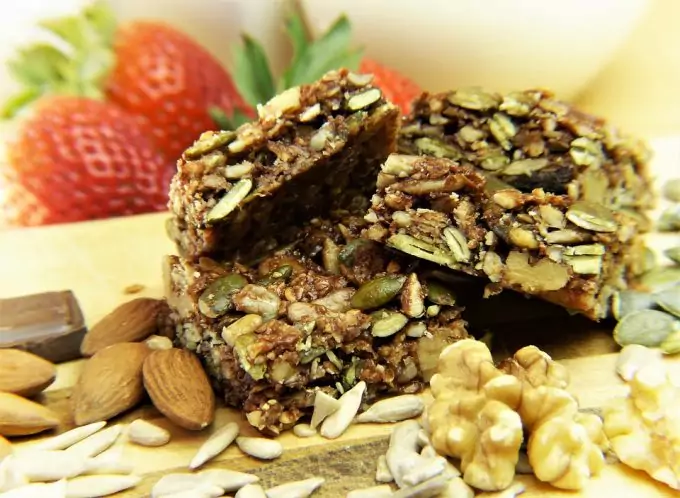
You can add dried fruits, green powders, protein powders, and other such things which come to your mind. When you’re finished, place each bar in a plastic bag and push the air from the bag as well as you can. This will preserve them for longer. Otherwise, it’s good to consume within several months. Optionally you can keep them in the fridge to prolong their shelf-life.
If you’re not really the kind of person who makes their own energy bars, you should check out our reviews for best energy bars to buy.
Hummus recipe
For this one you will need:
- 2 cups of chickpeas (total 24 ounces)
- 2 tbsp olive/sesame/sunflower oil
- 6 tbsp tahini (sesame paste)
- 4 garlic pieces (or powdered garlic)
- 3 lemons’ juice
To make the hummus you can either use a fork to mash or use a blender to puree the chickpeas; whichever you prefer.
If you do it manually, first mash them and when they are nicely pureed add the remaining ingredients and mix to have a nice consistency. You can also add water until it’s slightly liquid, but not too much. Two tablespoons would be enough.
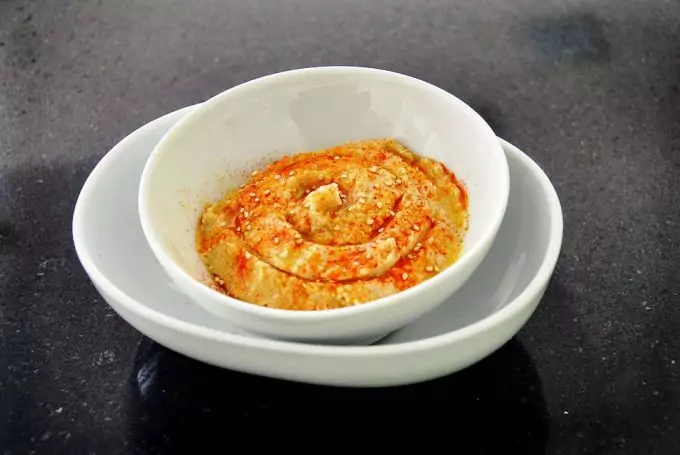
If you have a blender, put everything in the blender, plus some water and mix it for a minute or two, depending on your blender’s power. You can place the mixture in a plastic box, or even a plastic bag with a zip lock.
This addition to your main dish is very caloric and can give a nice boost of energy. It takes less of it to feed you, so you don’t need to carry loads of it.
Hardtack recipe
This recipe comes from the past, when people in the Great Depression tried to survive. We have yet to learn from the past generations about surviving, and here is one way to get closer to their experience.
Hardtack is a very bleak type of bread and to make it you need only three main ingredients:
- 4 or 5 cups of any flour
- 2 cups water
- 2-3 tbsp salt/herbs
Mix all the ingredients in a large bowl and massage until you have a nice consistency of the dough. Then try to flatten it on a table or other flat surface and make it no thicker than half an inch. Don’t make a circular shape of it, but actually make it a rectangle. Then proceed into cutting smaller squares pieces of 3 by 3 inches. Also, since you don’t have a baking soda (although you can add that to the recipe) you have to poke small holes with a fork on both surfaces – top and bottom ones.
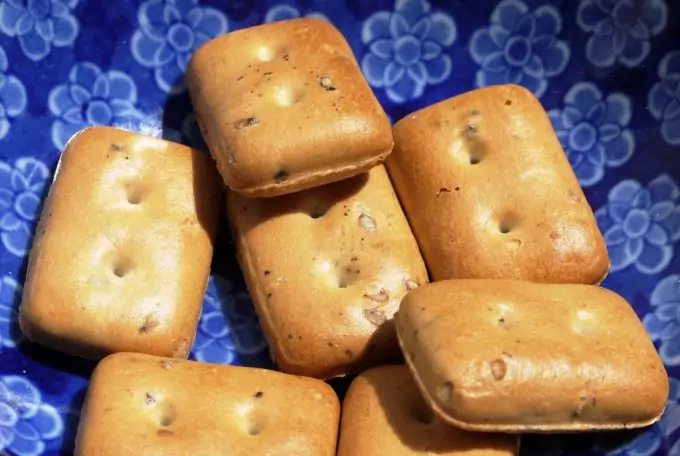
You need to cook in an oven and use a baking sheet, but you also can wrap each small bread square into its own aluminum bed using foil and then place each piece near the hottest charcoals at the base of your fire (if you’re in the wilderness). Either way you will have to wait about 30 minutes until you can eat it.
[the_ad_placement id=”in-text-2-type-r”]Usually in the past people waited for this bread to turn into a hard-as-brick bread piece. This is when it’s finally cured. It may not be as tasty as you want it to be, but if that’s all you can have for a meal, then you’ll enjoy it nonetheless.
If you have time to prepare this at home, you can keep this bread for a very long time, since it doesn’t contain almost any moisture (that’s why it’s so hard) and thus it won’t get mold for a very long time.
You can store it for months in a cooler place with almost no moisture around, or even keep it in a paper bag – if there’s any moisture left in the bread it will evaporate through the paper and yet remain safe in there. Use it for a camping or emergency situation. To eat it, simply soak it in water for 15 minutes. You can even fry it as it is soaked, or add pieces of it in a soup, etc.
Tomato macaroni with cheese
This recipe is very simple and takes little time to prepare. It’s very suitable for quick cooking during a disaster, or in a critical survival situation.
You need:
- Macaroni, 2 cups
- Cheese powder soup, 1 package
- Canned tomatoes, diced
First you need to cook the macaroni in boiling water. When the macaroni are cooked (no more than 10 minutes), remove them from the pan and drain the from the remaining water. Keep half of the water as you will need it. Now take the macaroni back into the pan and add the cheese soup and tomatoes.
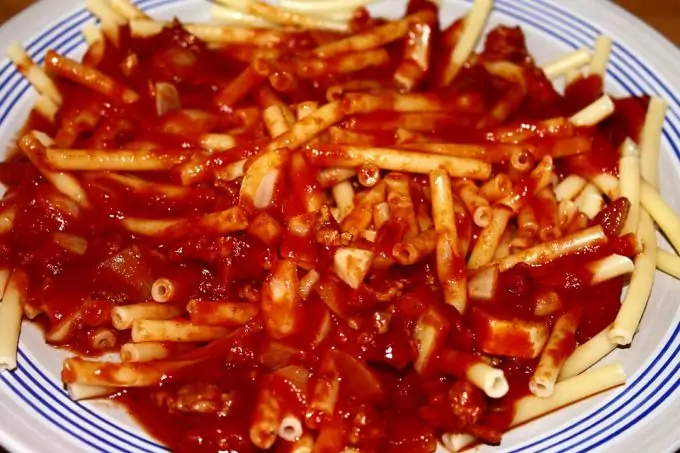
You don’t have to set it to boil, but keep it simmering on low heat for about 5 or more minutes. The cheese pieces should have melted by then. You can add a bit more water if you think it’s necessary. Otherwise, this is a nice simple recipe and cooks fairly quickly.
Beans and rice recipe
Yet another quick and easy recipe. Prepare:
- Rice, 2 cups
- Beans (or kidney beans) – ideally 2 cans
- 1 can white beans
- 1 jar of spaghetti sauce (no more than 50 ounces)
Boil water and add the rice in it. You have to cook the rice until it’s edible. When it’s done you can add the remaining ingredients so the tastes blend together nicely. Let that simmer until everything seems ready. If you think the rice absorbed too much water or that it evaporated, add more during the simmering process (or it may stick and burn to the bottom of the pan).
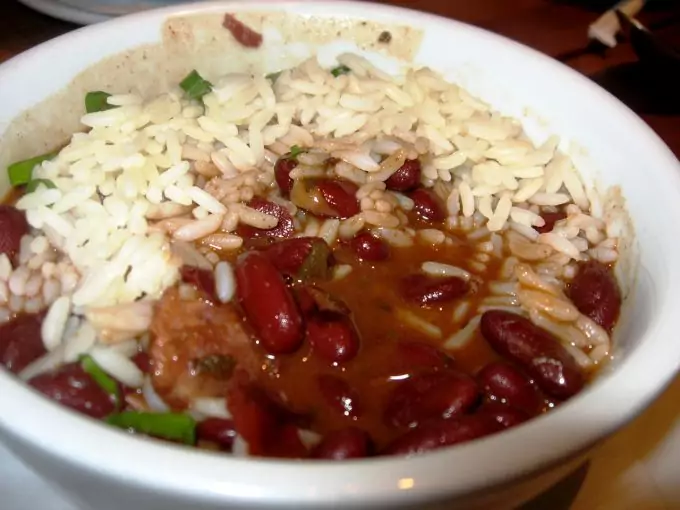
This recipe provides 6 to 8 portions.
Indian bread recipe
For this recipe you will need the following:
- 2 ½ cup all-purpose flour
- 1 tbsp baking soda
- ½ tsp salt
- Cooking oil or shortening
- ¾ cup water
Mix the flour, soda and salt in one bowl. When you’re done, add the oil/shortening, and next you have to massage with your hands. After a few minutes add the water and keep massaging until you finally have a nice, soft dough (it shouldn’t be sticking to your hands).
[the_ad_placement id=”in-text-3-type-r”]Next you have to make small balls from the dough, no bigger than a golf ball. Roll them nicely between your palms and then flatten them on a table or a flat surface. Don’t make them too thin though – the thickness should be less than an inch.

Image credit: thespruce.com
Use a skillet/frying pan and put cooking oil and preheat it. After a few minutes add each bread cake in the skillet and fry them on both sides.
Beans and mushrooms recipe
The ingredients are as follows:
- 1 can mushroom soup
- 1 can beans (any sort of beans will do)
Mix the contents of the two cans in a pan.

Image credit: seriouseats.com
Place on the fire or the stove and heat the food. If you have a garlic bread this meal would taste really good. And that’s it!
If you decide to get the mushrooms from the forest, you must be careful with the ones you choose as there are many poisonous types out there. The safest way is to buy them from the store or to grow them yourself. For the latter option, we have an in-depth guide on how to grow your own mushrooms.
Carrots and peas salad recipe
One more easy recipe and here’s what you need to make it:
- 1 can green peas
- 1 can carrots
- Salt/other spices or herbs
- Dressing for the salad/sauce
Prepare the vegetables by draining them first from the juice they were in the can.
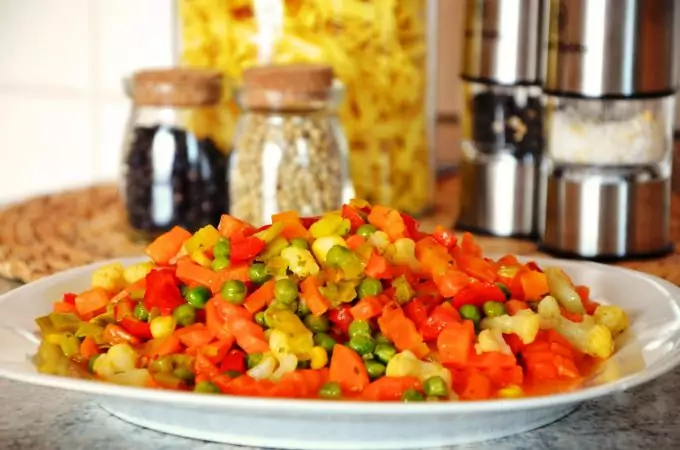
When they are ready, add them together in a bowl. Then use the dressing to top the salad and add the salt/spices/herbs.
Baked beans recipe
Here are the ingredients to prepare:
- 2 cans of beans
- 2 cans sausage/1 package hot dogs
- Mustard
- Powdered onions/garlic
- Bacon chips
Prepare a skillet/frying pan and put the beans (drain them before that) and bake them for a while. There’s no exact time for the baking process, it all depends on your own needs and tastes. After a while, you can add the sausages/hot dogs right at the edges of the skillet. Instead of a skillet you can also use a Dutch oven or other cooking pan you have at hand. Cook either over the fire or using a camp stove. You also want to make sure that the beans and sausages inside are nicely brown so you may have to rotate them a bit, to keep them evenly cooked.
All the above recipes can vary depending on what foods (canned, freeze-dried, caught game, etc) you have at hand. Whichever the situation you are in, you can customize these meals according to that. Don’t be afraid to experiment. However, as you already noticed, many recipes contain vegetables. If you’re lucky enough to have some on you then great, but in a survival situation, you should know about the wild plants you can safely eat. For this, we have a detailed guide on wild plants you can eat that you should check out.
While doing so you may discover more about your personal taste and this will also help you on how to prepare for a disaster/survival situation a bit better. Also, if you are allergic to some of the ingredients above (like peanut butter and mushrooms) you can substitute the peanut butter with other nut butter, which you’re not allergic to, and the mushrooms can be substituted with soft meat bites.




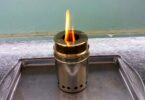

All the dishes on these photos look very good and tasty but I don’t understand how it is possible to cook them in survival conditions.
For example, where do you take cheese, lemon, greens, honey or peanut butter in such a situation? I would like to know what can replace the salt or what herbs and berries may be found in the wood in order to make wildfowl or fish tastier.
I ask these questions because I think that in survival conditions a man is left alone with nature having no usual things and he has to find the food for himself.
You’re right, in a survival situation that caught you unprepared, these dishes are not possible. But, if you were cautious and prepared a survival pantry for dark days, you will have all the necessary items to prepare these dishes and more.
When it comes to salt in the wilderness, you may find salt caves or other areas where salt occurs naturally. Also, you can use salt water for this.
They all look yummy and healthy! I’m sure my friends will definitely enjoy the mac and cheese in the forest! Haha! However, if there’s a real emergency, I think there’s no way I can cook mac and cheese, or make a bowl of ramen too. Perhaps I’ll bring an eat easy-to-open canned goods and/or instant noodles. Anyway, these dishes are mouth-watering, so definitely we’ll try some. :)
Hi Molly,
Canned goods are a good back-up but remember that it’s always better to have healthy food at hand as you body needs more nourishment during high stress situations like an emergency.
Samuel
Some of the recipes that I know are time and energy consuming, also not that good. I’m going to try the peanut butter bars. Peanut butter is a protein-rich food, eating peanut butter will make you feel fuller for long periods of time. Additionally the protein is also good for building and repairing muscles, which is very important when you go on very long trips where you have to walk a lot. Peanut butter is actually a great source of healthy fats. Fats are higher in caloric value so there is a lot of energy in 100 grams of peanut butter. And an important advantage of this bars are that you can eat them on the go, don’t have to camp or lose time on settling for a lunch.
I have been in a number of survival situations, and believe you me, survival recipes are a big help. Peanut butter bars are a great choice, Daniel.